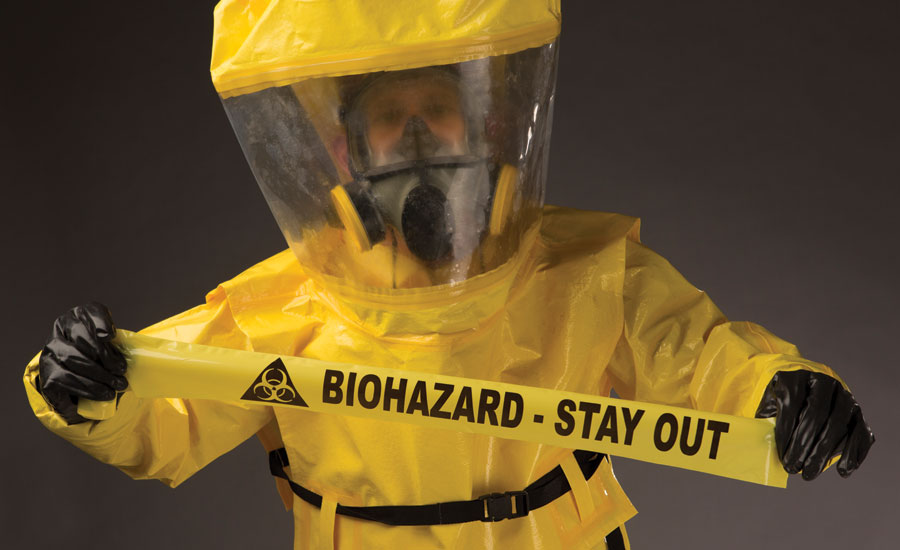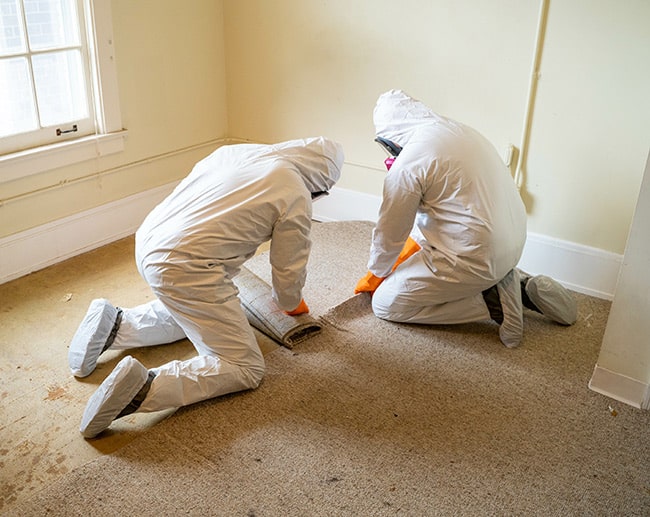Clandestine Lab Cleanup: Comprehensive Decontamination for Hazardous Sites
Wiki Article
Expert Biohazard Cleaning and Decontamination for Blood, Bodily Fluids, and Hazardous Materials
In the world of biohazard cleansing and decontamination for blood, bodily liquids, and unsafe materials, accuracy and experience are extremely important. The prospective health and wellness risks linked with direct exposure to biohazards underscore the critical demand for careful handling and complete clean-up. Specialized training equips specialists with the understanding and skills essential to attend to these hazardous scenarios successfully. However, it is not just regarding cleaning up; the value of employing correct decontamination strategies can not be overstated. As we browse the elaborate landscape of biohazard cleanup, comprehending the nuances of guidelines, compliance, and the specific tools at play ends up being essential in making certain a extensive and secure decontamination procedure.
Health Risks of Biohazard Exposure
Direct exposure to biohazards postures considerable wellness risks that can result in extreme consequences for neighborhoods and people alike. Biohazards encompass a large range of organic compounds, including blood, bodily fluids, mold, bacteria, viruses, and other potentially infectious materials. When individuals enter contact with these biohazards, whether through accidents, improper handling, or environmental exposure, they face the risk of having significant illnesses or conditions.Among the key health and wellness threats linked with biohazard direct exposure is the transmission of infectious diseases. Bloodborne pathogens such as HIV, liver disease B and C, and various microorganisms can be existing in biohazardous materials, positioning a straight hazard to human wellness. Breathing in airborne biohazards like mold spores or entering into call with infected surfaces can also lead to respiratory system problems, allergies, and other adverse wellness impacts.
Additionally, biohazard exposure can have lasting health and wellness implications, with some conditions showing up years after the preliminary contact (Blood Cleanup). Consequently, it is critical to prioritize proper biohazard cleansing and decontamination to minimize these health and wellness risks and make certain the security of neighborhoods and people

Specialized Training for Biohazard Cleaning
When it concerns taking care of biohazard cleanup effectively and securely, specialized training plays a basic role in making sure correct decontamination procedures are complied with. Biohazard cleanup needs details knowledge and skills to successfully minimize threats connected with bloodborne pathogens, bodily fluids, and harmful products. Specialists trained in biohazard cleanup go through extensive direction on just how to securely take care of, get rid of, and deal with biohazardous materials to avoid contamination and exposure.Specialized training for biohazard clean-up covers a variety of necessary subjects, consisting of appropriate individual safety devices (PPE) usage, bloodborne microorganism understanding, decontamination methods, and contaminated materials disposal procedures. Individuals trained in biohazard cleanup are equipped with the necessary know-how to examine contamination degrees, determine potential risks, and implement appropriate cleaning treatments in conformity with regulative standards.
Continual training and education and learning are vital in the area of biohazard cleaning to remain updated on the newest decontamination modern technologies, safety and security procedures, and policies. By purchasing specialized training, biohazard cleaning experts can effectively react to emergency cleaning circumstances and guard both public health and wellness and the environment.
Importance of Appropriate Purification Methods
Using appropriate decontamination methods is essential in biohazard cleanup to successfully reduce and eliminate harmful materials wellness risks. Reliable decontamination not just guarantees the removal of noticeable traces of blood, bodily fluids, and various other biohazards but additionally targets undetectable virus that may posture major wellness risks otherwise correctly gotten rid of. By her explanation complying with stringent decontamination methods, trained experts can significantly minimize the threat of exposure to hazardous microbes, viruses, and germs that can result in infections or conditions.Proper purification strategies involve making use of specific tools and disinfectants that are specifically developed to reduce the effects of biohazards effectively. Extensive cleansing and sanitation of contaminated areas are vital to stop the spread of virus and ensure a safe environment for owners. Furthermore, the appropriate disposal of biohazardous waste complying with purification treatments is crucial in protecting against contamination of various other surface areas or people.

Devices and Tools for Safe Cleanup
The correct tools and tools play an important role in ensuring the secure and efficient clean-up of biohazardous materials. When dealing with blood, physical fluids, or hazardous products, biohazard cleaning specialists count on specialized gear to decrease exposure risks and extensively sanitize the damaged location. Personal safety equipment (PPE) such as handwear covers, goggles, masks, and coveralls are vital to safeguard versus direct call with potentially transmittable materials. In addition, biohazard cleaning packages including anti-bacterials, absorbent products, and biohazard bags are used website link to securely consist of and dispose of polluted items. Blood Cleanup.Advanced cleaning tools like hospital-grade disinfectants, HEPA-filtered vacuum cleaners, and misting machines are utilized to sterilize surface areas and get rid of biohazards successfully. Specialized tools such as sharps containers and biohazard garbage disposal bins are made use of to safely manage sharp items and biohazardous waste products. By making use of the appropriate equipment and tools, biohazard cleaning professionals can make sure a detailed cleanup procedure that focuses on safety and security and decreases wikipedia reference health risks for both workers and residents of the affected space.
Laws and Compliance in Biohazard Cleaning
Proper adherence to policies and compliance standards is vital in biohazard cleansing to make certain the safety and security of both employees and the setting. Federal government companies such as OSHA (Occupational Security and Health And Wellness Administration) and the EPA (Epa) have developed details guidelines for biohazard cleanup treatments to decrease health and wellness dangers and environmental contamination. These regulations cover a series of facets consisting of the handling, transportation, and disposal of biohazardous materials, as well as the essential training and safety devices required for personnel entailed in the cleaning process.Biohazard cleaning firms need to stay current with these laws to ensure that their operations fulfill the needed safety criteria. Failure to adhere to these guidelines can cause serious repercussions, including fines, lawful action, and jeopardizing the health of individuals and the atmosphere. By following rigorous guidelines and compliance procedures, biohazard cleaning firms can efficiently mitigate dangers and ensure a risk-free and comprehensive clean-up process for all events involved.
Verdict
Finally, biohazard cleansing and decontamination need specialized training, appropriate strategies, and adherence to regulations. Direct exposure to blood, bodily liquids, and dangerous products poses considerable health dangers, making it critical to use the ideal tools and tools for risk-free cleaning. By following stringent protocols and standards, specialists can effectively reduce the threats related to biohazard exposure and guarantee the safety and security of both themselves and others.
As we browse the intricate landscape of biohazard cleanup, comprehending the subtleties of laws, conformity, and the specialized devices at play comes to be important in making sure a comprehensive and risk-free decontamination process. (Blood Cleanup)
When it comes to managing biohazard cleaning successfully and securely, specialized training plays a basic duty in making certain correct purification treatments are adhered to.Making use of correct purification strategies is vital in biohazard cleaning to properly remove harmful products and lessen health threats. In addition, biohazard cleansing sets including disinfectants, absorbent products, and biohazard bags are utilized to safely include and dispose of infected items.
Federal government companies such as OSHA (Occupational Security and Health Management) and the EPA (Environmental Security Company) have developed particular guidelines for biohazard cleaning procedures to minimize wellness threats and environmental contamination.
Report this wiki page